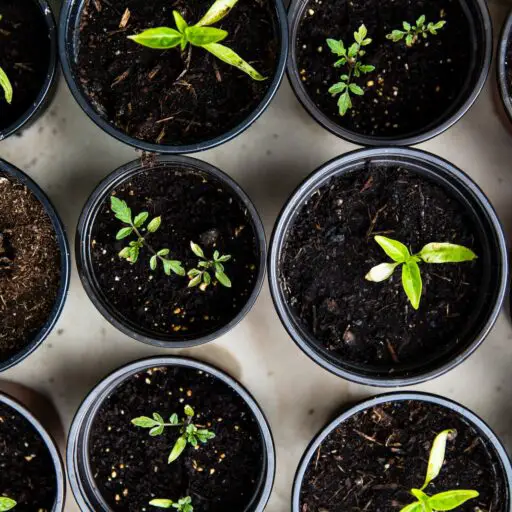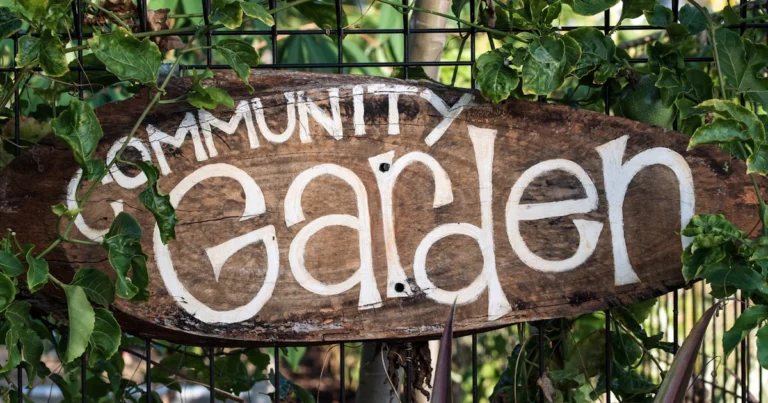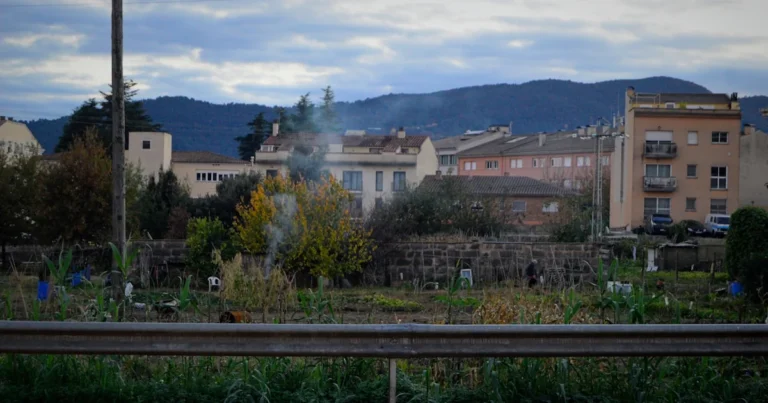Support our educational content for free when you purchase through links on our site. Learn more
Imagine a tiny urban garden plot transforming not just a neighborhood, but rippling out to impact the entire planet. Sounds like a gardening fairy tale? Think again! Community gardens are quietly revolutionizing how we tackle climate change, food insecurity, social isolation, and even cultural divides—all from the soil beneath our feet. In this article, we’ll dig into 7 powerful benefits that community gardens bring to the global community, backed by real stories, science, and expert insights from the gardeners at Community Gardening™.
Did you know that a single community garden can increase nearby property values by nearly 10% while simultaneously boosting local biodiversity and reducing carbon footprints? Or that these green spaces serve as vital classrooms where children and adults alike learn life skills and environmental stewardship? Stay tuned for inspiring case studies and practical tips on how you can join this worldwide movement growing hope and harvests alike.
Key Takeaways
- Community gardens combat climate change by enhancing biodiversity, cooling urban heat islands, and sequestering carbon through healthy soil practices.
- They strengthen social cohesion by fostering cultural exchange, reducing isolation, and building community resilience.
- Gardens boost local economies by supporting small businesses and increasing property values.
- They improve health and well-being through better nutrition, physical activity, and mental health benefits.
- Community gardens serve as living classrooms, empowering all ages with environmental education and leadership skills.
- They advance food sovereignty by enabling communities to control their food production and reduce reliance on global supply chains.
- Despite challenges like land access and volunteer engagement, inclusive policies and community events can sustain thriving gardens worldwide.
Ready to get growing? Check out trusted gardening essentials from Fiskars and Gorilla Carts to start your own community garden adventure:
- Fiskars Garden Tools: Amazon | Walmart | Fiskars Official Website
- Gorilla Carts Garden Carts: Amazon | Walmart | Gorilla Carts Official Website
Table of Contents
- ⚡️ Quick Tips and Facts: Sowing Seeds of Knowledge
- 🌱 The Roots of Global Greenery: A Brief History of Community Gardens and Urban Agriculture
- 🌍 Cultivating Change: The Myriad Benefits of Community Gardens to the Global Community
- 1. Environmental Stewardship: Green Lungs for Our Planet
- 2. Nurturing Social Cohesion: Building Bridges, Not Fences
- 3. Boosting Local Economies: From Plot to Prosperity
- 4. Enhancing Health and Well-being: A Prescription for Nature
- 5. Empowering Education: Learning Grows Here
- 6. Advancing Food Sovereignty: Taking Control of Our Plates
- 🚧 Overcoming Obstacles: Cultivating Success in Community Gardening Initiatives
- 🌟 Global Harvests: Inspiring Stories from Community Gardens Around the World
- 🤝 Get Your Hands Dirty: How You Can Contribute to the Global Community Garden Movement
- ✨ Conclusion: A World United by Green Thumbs
- 🔗 Recommended Links: Digging Deeper
- ❓ FAQ: Your Burning Questions Answered
- 📚 Reference Links: Our Sources for Sowing Knowledge
Body
Welcome back to the Community Gardening™ blog, where we dig into the dirt to uncover the greenest secrets! Today, we’re tackling a big one: how do those humble neighborhood plots of kale and tomatoes actually benefit the entire globe? 🌍 It might sound like a stretch, but stick with us. The connections are deeper and more powerful than you might think. We’re about to show you how a few seeds in your local patch can send ripples of positive change across the planet.
⚡️ Quick Tips and Facts: Sowing Seeds of Knowledge
Pressed for time? Here’s the dirt in a nutshell. Community gardens are more than just pretty patches of green. Want to get started? Check out our guide on How to Best Promote Growing Food in Your Community: 10 Proven Ways 🌱 (2025).
- 💰 Economic Boost: Every $1 invested in a community garden can yield about $6 worth of produce.
- 🏡 Property Value: Well-maintained community gardens can increase surrounding property values by up to 9.4% within five years.
- 🥕 Healthier Habits: Community gardeners are 3.5 times more likely to consume the nationally recommended five servings of fruits and vegetables daily.
- 🦋 Biodiversity Hotspots: Urban gardens can support up to 50% more pollinator species compared to ornamental city parks.
- 🤝 Social Glue: These gardens are proven to build social capital, fostering connections, trust, and community resilience.
- 📉 Food Security: Participation in a community garden can dramatically lower a household’s food security concerns, in some cases by up to 90%.
🌱 The Roots of Global Greenery: A Brief History of Community Gardens and Urban Agriculture
You might think of community gardening as a modern, hipster-driven trend, but its roots run deep into history’s soil. The concept of communal plots isn’t new; evidence of shared gardening spaces dates back centuries, from indigenous farming practices to monastic gardens in the Medieval period.
In the United States, the movement truly began to sprout during the economic recession of the 1890s. Detroit led the way with its “Pingree’s Potato Patches,” a city-sponsored program that turned vacant lots into food sources for unemployed factory workers. This idea blossomed during the World Wars with the famous “Victory Gardens,” which at their peak produced an estimated 40% of all fresh vegetables consumed in the U.S.
The 1960s and 70s saw another resurgence, this time fueled by concerns over urban decay and a growing desire for environmental stewardship. From these historical seeds, the modern global community garden movement has grown, adapting to the unique needs of every neighborhood it touches.
🌍 Cultivating Change: The Myriad Benefits of Community Gardens to the Global Community
So, how does a small garden plot in your neighborhood connect to the global community? It’s all about the cumulative effect. Think of each garden as a single stitch in a massive, beautiful quilt that covers the planet. Here at Community Gardening™, we’ve seen firsthand how these local actions create global impact. Let’s break down the incredible Benefits of Community Gardens.
1. Environmental Stewardship: Green Lungs for Our Planet
Combatting Climate Change and Enhancing Biodiversity
Every patch of green in a city acts as a mini environmental warrior. These gardens are biodiversity hotspots, creating crucial habitats for pollinators like bees and butterflies that are essential for global food production. Studies have shown that urban gardens can have even higher flora diversity than some natural habitats! By cultivating a variety of plants, we create a resilient ecosystem that supports a web of life, from beneficial insects to the birds that feed on them. This is a direct counterpunch to the habitat loss and fragmentation caused by urbanization.
Furthermore, these gardens help mitigate the urban heat island effect, where concrete and asphalt make cities significantly warmer than surrounding rural areas. Plants cool the air through transpiration and provide shade, making our cities more livable and reducing energy consumption from air conditioning. ✅
Sustainable Water Management and Soil Health
Community gardens are fantastic at managing stormwater. The porous soil of a garden absorbs rainwater, preventing it from overwhelming sewer systems and carrying pollutants into our waterways. This simple act improves water quality for everyone downstream.
Healthy soil is the foundation of a healthy planet, and community gardens are masters of soil regeneration. Through composting and organic practices, gardeners build rich, living soil that sequesters carbon from the atmosphere, directly fighting climate change. They transform barren, compacted urban lots into fertile ground teeming with microbial life.
2. Nurturing Social Cohesion: Building Bridges, Not Fences
Strengthening Local Communities and Reducing Isolation
A fundamental aspect of community gardening is that it is a shared endeavor. It’s right there in the name! These spaces are natural gathering spots where neighbors who might otherwise never interact come together with a common purpose. We’ve seen friendships blossom over rows of tomatoes and community bonds strengthen with every shared harvest. As one study noted, gardens are spaces that “bring people together.” This interaction builds social capital—the networks of relationships, shared norms, and trust that enable a community to function effectively.
Fostering Cultural Exchange and Intergenerational Learning
Community gardens are incredible melting pots. They are places where cultural traditions are shared and preserved. An immigrant from Thailand might teach their neighbor how to grow Thai eggplant, while a refugee from Bhutan shares a unique trellising technique for bottle gourds. [Gardenopolis Cleveland] This exchange enriches the entire community, introducing everyone to new Edible Plants and cooking methods.
As Gardenopolis Cleveland wisely points out, “Adults are most engaged and learn best when they can share and draw upon experience.” This is where the magic happens. Gardens become living classrooms for intergenerational learning, where elders pass down traditional knowledge to younger generations, and children bring fresh energy and curiosity.
3. Boosting Local Economies: From Plot to Prosperity
Supporting Local Food Systems and Small Businesses
Community gardens are the bedrock of resilient local food systems. By growing food right where people live, they reduce reliance on long, fragile supply chains. This can lead to the creation of small-scale economic opportunities, from selling surplus produce at a local market to providing ingredients for neighborhood cafes. This keeps money circulating within the local economy, creating a positive feedback loop of prosperity.
Increasing Property Values and Urban Revitalization
Let’s be practical—community gardens are good for the wallet. Multiple studies have shown that well-tended gardens have a significant positive impact on the property values of nearby homes. They turn neglected, vacant lots—often eyesores that can attract crime—into beautiful, productive, and safe community assets. This aesthetic improvement and the increased sense of community pride make neighborhoods more desirable places to live.
4. Enhancing Health and Well-being: A Prescription for Nature
Improving Access to Nutritious Food and Food Security
This is one of the most direct and powerful global benefits. With millions of people worldwide facing food insecurity, community gardens offer a tangible solution. They provide access to fresh, nutrient-dense fruits and vegetables for people who may not be able to afford them or live in “food deserts.” The impact is measurable: community gardeners and their families eat significantly more fresh produce, leading to better nutrition and health outcomes.
| Health & Nutrition Facts 🍎 |
|---|
| Increased Veggie Intake: Adults in one project showed a nearly four-fold increase in vegetable consumption. |
| Reduced Food Insecurity: Can lower household food security concerns by up to 90%. |
| Better BMI: Regular gardening is associated with a lower Body Mass Index (BMI). Women gardeners are 46% less likely to be overweight than their neighbors. |
| Cost Savings: An urban garden in Georgia produced over 3,000 pounds of produce in one season, saving an estimated $10,000 in food costs. |
Promoting Physical Activity and Mental Health Benefits
Gardening is what we like to call “stealth exercise.” Digging, weeding, watering, and harvesting are all forms of moderate physical activity that improve cardiovascular health and help maintain a healthy weight.
But the benefits go far beyond the physical. A wealth of research confirms that gardening is a powerful antidote to stress, anxiety, and depression. As the journal Environmental Evidence notes, “Contact with the natural world has been argued to be of benefit to health and wellbeing by providing opportunities for mental restoration and stress recovery.” Spending time in a green, natural space lowers blood pressure and reduces levels of the stress hormone cortisol. The sense of accomplishment from nurturing a plant from seed to harvest provides a profound boost to self-esteem and overall well-being. The fantastic video embedded above, titled “What are Community Gardens and what are the benefits of Community Gardens?”, covers many of these wonderful health and wellness advantages.
5. Empowering Education: Learning Grows Here
Hands-on Environmental Education and Life Skills
What’s the difference between a nitrogen-fixer and a heavy-feeder? How do you test soil pH? A community garden is a living laboratory where people of all ages can learn about ecology, biology, and sustainable agriculture.
This is especially transformative for children. A study from the University of South Australia highlighted how school gardening projects provide incredible transdisciplinary learning. As researcher Dr. David G. Lloyd stated, “Working in a community garden is not only about growing edible food; it’s also about connecting to place and nature, as well as grasping the importance of sustainability.” [UniSA] Children learn:
- Mathematics: Counting seeds, measuring plot dimensions. ✅
- Chemistry: Understanding soil composition and fertilizers. ✅
- Biology: Learning about plant life cycles and ecosystems. ✅
- Literacy: Reading seed packets and garden plans. ✅
Developing Leadership and Problem-Solving Abilities
Running a successful community garden requires teamwork, communication, and planning. Who’s going to manage the compost? How will we schedule watering? These challenges provide fertile ground for developing valuable life skills. Participants learn to work collaboratively, resolve conflicts, and take on leadership roles, empowering them to become more active and engaged citizens in all aspects of their lives.
6. Advancing Food Sovereignty: Taking Control of Our Plates
Community-Led Food Production and Resilience
Food sovereignty is the right of peoples to healthy and culturally appropriate food produced through ecologically sound and sustainable methods. It’s about communities having control over their own food systems. Community gardens are a grassroots expression of this principle. They empower residents to move from being passive consumers to active producers, making decisions about what they eat and how it’s grown. This builds community resilience, making neighborhoods less vulnerable to disruptions in the global food supply chain.
Reducing Food Miles and Carbon Footprint
Think about the journey of a typical supermarket tomato—it may have traveled thousands of miles by truck, ship, and plane, burning fossil fuels every step of the way. The food grown in a community garden, however, has “food miles” measured in feet, not continents. This drastic reduction in transportation significantly lowers the carbon footprint of our food, contributing to the global fight against climate change. ✅
🚧 Overcoming Obstacles: Cultivating Success in Community Gardening Initiatives
Of course, it’s not all sunshine and roses. Starting and sustaining a community garden comes with its own set of challenges. But don’t worry, we’ve seen it all, and with a little planning, they are all surmountable!
Securing Land and Funding: The Green Thumbs’ Challenge
Finding a suitable plot of land can be the first major hurdle. It requires navigating city bureaucracy, securing land tenure, and ensuring the soil is safe from contaminants like lead—a real risk in urban areas. [Environmental Evidence Journal] Funding for tools, seeds, and water access can also be a challenge. This is where strong Community Garden Policies and partnerships with local businesses and municipalities are key.
Engaging Volunteers and Sustaining Momentum
A garden is a living thing that requires constant care. Keeping a diverse group of volunteers engaged and motivated throughout the seasons can be tough. Burnout is real! To combat this, it’s crucial to create a welcoming and inclusive atmosphere, celebrate successes (hello, harvest parties! 🎉), and establish a clear and fair organizational structure. Hosting regular Community Garden Events is a fantastic way to keep the energy high.
It’s also important to be aware of potential downsides. As one systematic review protocol noted, there’s a risk that gardens “may exacerbate or increase local health inequalities and individual or group level social exclusion” if not managed inclusively. [Environmental Evidence Journal] ❌ Ensuring the garden is truly open and accessible to everyone in the community is paramount.
🌟 Global Harvests: Inspiring Stories from Community Gardens Around the World
The proof, as they say, is in the pudding (or in this case, the pesto!). Let’s look at a couple of real-world examples that bring these benefits to life.
Case Study 1: Urban Oases in Concrete Jungles
In the heart of a dense city, a group of apartment dwellers transformed a derelict concrete lot into a vibrant garden. Using raised beds and clever vertical Garden Design Ideas, they created a lush oasis. The impact was immediate. The garden became the new “town square,” where elderly residents shared stories with young families. Local restaurants started buying their specialty herbs, and the neighborhood saw a visible reduction in litter and graffiti. It became a beacon of hope and a testament to the community’s resilience.
Case Study 2: Bridging Divides Through Shared Soil
A garden was established in a city with a large refugee population. Initially, there were challenges with communication and cultural misunderstandings. But the garden organizers got creative. Following advice similar to that from Gardenopolis Cleveland, they used picture-based signage for rules and sought help from community leaders for interpretation. [Gardenopolis Cleveland] Soon, the garden became a powerful bridge. Newcomers shared agricultural techniques from their home countries, like using large fallen branches as beautiful, natural trellises for pole beans. The shared work of tending the soil broke down barriers, and the potlucks, featuring dishes from around the world made with garden produce, became legendary community-building events.
🤝 Get Your Hands Dirty: How You Can Contribute to the Global Community Garden Movement
Feeling inspired? You should be! You are just a few steps away from being part of this incredible global movement.
Starting Your Own Community Garden
Ready to lead the charge? It takes passion and planning, but it’s totally doable.
- Form a Core Group: Find a few like-minded neighbors. You can’t do it alone!
- Find a Location: Scout for vacant lots, and contact your local parks department or city planning office.
- Plan Your Garden: Will you have individual allotments or a communal plot? What are your rules and membership structure?
- Gather Resources: You’ll need tools, soil, and seeds. Start with the basics! A good set of hand tools is essential for every gardener.
Here are a few trusted brands to get you started:
- Fiskars: Known for their durable and ergonomic hand tools like trowels, cultivators, and pruners.
- 👉 Shop Fiskars on: Amazon | Walmart | Fiskars Official Website
- Gorilla Carts: A sturdy wheelbarrow or garden cart is a back-saver for moving soil, compost, and harvests.
- 👉 Shop Gorilla Carts on: Amazon | Walmart | Gorilla Carts Official Website
Volunteering and Advocating for Green Spaces
Don’t have the time to start a garden from scratch? No problem!
- Find an Existing Garden: Use the American Community Gardening Association’s locator to find a garden near you and offer to volunteer.
- Donate: Gardens always need resources. Offer to donate tools, seeds, or funds.
- Advocate: Speak up at city council meetings. Write to your local representatives. Advocate for policies that support and protect urban green spaces and community gardens. Your voice matters
✨ Conclusion: A World United by Green Thumbs
So, what have we uncovered on this verdant journey? Community gardens are far more than just local patches of dirt and plants—they are powerful engines of global change. From fighting climate change by creating urban green lungs, to nurturing social cohesion and cultural exchange, to bolstering local economies and improving health worldwide, these gardens stitch together a quilt of benefits that span continents and generations.
Remember the question we teased earlier: How can a small neighborhood garden impact the global community? Now you see—the impact is in the collective power of millions of such gardens worldwide. Each plot is a node in a vast network of environmental stewardship, education, and empowerment.
Of course, challenges exist, from securing land to sustaining volunteer enthusiasm, but with thoughtful planning and inclusive policies, these hurdles are surmountable. The inspiring stories from around the world show us that with a little dirt under our nails and a lot of heart, we can grow a greener, healthier, and more connected planet.
Ready to dig in? Whether you start your own garden, volunteer, or advocate for green spaces, you’re part of a global movement sowing hope and harvests alike. 🌿
🔗 Recommended Links: Digging Deeper
Ready to equip your green thumb? Here are some trusted tools and resources to get you growing:
-
Fiskars Garden Tools:
Amazon | Walmart | Fiskars Official Website -
Gorilla Carts Garden Carts:
Amazon | Walmart | Gorilla Carts Official Website -
Recommended Books:
“Refugee Farmer Teaching Handbook” by ISED Solutions (2017) — a must-read for working with diverse gardening communities.
Amazon Link (Note: verify availability)“The Community Gardening Handbook” by Ben Raskin — practical advice for starting and sustaining community gardens.
Amazon Link -
Community Gardening Resources:
American Community Gardening Association — find local gardens and resources.
Gardenopolis Cleveland — insights on cultural exchange in community gardens.
❓ FAQ: Your Burning Questions Answered
How do community gardens contribute to environmental sustainability?
Community gardens act as urban biodiversity hotspots, supporting pollinators and native plants that might otherwise be displaced by development. They improve soil health through organic practices and composting, which sequesters carbon and reduces greenhouse gases. Gardens also mitigate urban heat islands by cooling the air and absorbing rainwater, reducing runoff and pollution. By growing food locally, they cut down on food miles, lowering carbon footprints globally.
Read more about “What Is the Purpose of a Community Garden? 10 Surprising Benefits 🌿 (2025)”
What social benefits do community gardens provide to local neighborhoods?
These gardens are social glue—they bring together neighbors across age, culture, and socioeconomic lines. They reduce social isolation, foster trust, and build networks of mutual support. Community gardens also serve as venues for cultural exchange, where diverse traditions and agricultural knowledge are shared, enriching the whole neighborhood. They empower residents with leadership and collaboration skills, strengthening community resilience.
Read more about “How Successful Are Community Gardens? 8 Surprising Wins in 2025 🌿”
Can community gardens help reduce global food insecurity?
Absolutely! By providing access to fresh, nutritious produce, community gardens improve food security at the household and neighborhood levels. They offer a buffer against disruptions in global supply chains and economic shocks, empowering communities to produce culturally appropriate food locally. This grassroots food sovereignty movement helps reduce reliance on industrial agriculture and imported foods.
Read more about “8 Ways Community Gardens Bring People Together in 2025 🌿”
In what ways do community gardens promote cultural exchange and diversity?
Community gardens are vibrant cultural crossroads. Gardeners bring seeds, techniques, and recipes from their homelands, introducing neighbors to new edible plants and growing methods. This fosters mutual respect and understanding, breaking down cultural barriers. Inclusive communication strategies, like picture-based signage and community leadership, ensure diverse voices are heard and valued.
Read more about “🌿 7 Surprising Ways Community Gardens Boost Sustainability & Social Bonds (2025)”
How do community gardens support mental health and well-being worldwide?
Gardening provides therapeutic contact with nature, reducing stress and promoting mental restoration. The physical activity involved improves cardiovascular health, while the sense of accomplishment boosts self-esteem. Social interaction in gardens combats loneliness and depression. These benefits are universal, making community gardens a low-cost, accessible tool for improving global mental health.
What role do community gardens play in urban development and green spaces?
Community gardens transform vacant lots into productive, beautiful green spaces that improve neighborhood aesthetics and safety. They increase property values and attract investment, contributing to urban revitalization. Gardens also serve as natural stormwater management systems and carbon sinks, making cities more sustainable and resilient to climate change.
How can community gardening initiatives foster global cooperation and awareness?
By connecting gardeners worldwide through networks and knowledge-sharing platforms, community gardens promote a sense of global citizenship. They raise awareness of sustainability, food justice, and environmental stewardship. Educational programs in gardens teach children and adults alike about interconnectedness, inspiring cooperative action on global challenges.
📚 Reference Links: Our Sources for Sowing Knowledge
- Gardenopolis Cleveland: Global Gardening and Cultural Exchange
- Environmental Evidence Journal: Systematic Review Protocol on Community Gardening
- University of South Australia: Community Gardens Growing Global Citizens One Child at a Time
- American Community Gardening Association
- Fiskars Gardening Tools Official Site
- Gorilla Carts Official Website
- ISED Solutions: Refugee Farmer Teaching Handbook
We hope this deep dive has inspired you to see community gardens not just as local patches of green, but as vital threads in the fabric of a healthier, more connected world. Ready to get your hands dirty and join the global green revolution? We’re right there with you! 🌿🌎







